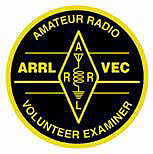One of the problems with practice, courses, and training activities such as this, is the fact that theory fails the moment it meets reality. Even exercises suffer from the fact those planning the exercise are, well, planning. Preconceived ideas are brought to the exercise by the planner or planners.
Of course, the planned exercise usually suffers the same fate as every other plan, it too will show its flaws the moment it meets reality.
So, what do we do to improve our ability to refine our skills and deal with unexpected circumstances? There are several options. We can improve our skills by participating in special activities such as fox-hunting, balloon launch and tracking, and special events.
Tonight we’re going to discuss Special Events. Special Events are unique from the other mentioned activities because we are serving other organizations and people we may never have worked with before. As a result, the participants, routes, weather conditions, and unexpected emergencies will change from year to year.
So what are the similarities to an real EMCOMM event? Here are a few:
We use much the same equipment (fixed, mobile, HT, etc)
We often utilized the same operating modes and architecture (net control, deployed assets, etc).
We will be interacting with one or more served entities and other support groups (police, fire, etc).
Both circumstances usually rely on a tactical net (although formal traffic is often not required).
Technical challenges are similar, since equipment is being set-up on the fly in less than ideal conditions.
The situation is “real time”, so dealing with equipment malfunctions and other problems must be solved as they occur.
Go-Kit requirements for events are similar to emergencies, giving us a chance to see what works and doesn’t.
There are also some differences:
Public Events are scheduled, so there is no element of surprise involved in that respect.
Activation procedures are not tested, as we aren’t being called up by a served agency in an emergency.
There is only one served entity, even if we’re working with other groups.
Equipment and coverage over the event route can be planned for and tested in advance.
Most logistics issues can be handled ahead of time (water, food, relief, etc).
Formal messages are rarely moved at such events.
There is not need to interface with HF nets or linked repeater systems.Training Opportunities
Bicycle rides, parades, and fun runs are great opportunities to use APRS and DSTAR for tracking deployed vehicles.
PSK31, ATV, and other alternative modes can be put to work for communicating information.
We’ll be planning, training, and working with outside entities, a great Public Relations opportunity.




